Key Takeaways:
- You can easily determine your SAA’s generation once you recognize the key indicators. First-generation guns (1873-1941) use a screw to hold the cylinder pin and have serial numbers ranging from 1 to approximately 357,859. Second-gen revolvers (1956-1974) switched to a cross-pin design and serial numbers with “SA” suffixes. Third-generation guns (1976-present) retain the cross-pin setup but start around $80,000 and are still being manufactured today.
- Each generation tells its own story about American manufacturing and culture. First-generation SAAs are the real frontier guns that actually tamed the West, while second-generation revolvers made a comeback during the 1950s Western craze, featuring better metallurgy for smokeless powder. Third-gen guns represent modern manufacturing meeting classic design — they’re more consistent and reliable than anything Colt could’ve made in the old days.
- This isn’t just about owning a gun — you’re buying into 150 years of American legend. The Colt SAA became the visual shorthand for the Old West in movies, TV, and popular culture. Whether you’ve got a beat-up first-gen or a brand-new third-gen, you’re holding the same basic design that shaped the frontier and continues to capture imaginations today.
Look, I’m gonna be straight with you: if you’ve got a Colt Single Action Army sitting in your safe or hanging on your wall, you’re holding a piece of American legend. But here’s the thing: not all SAAs are created equal. There are three distinct generations of these revolvers, and knowing which one you’ve got can make a huge difference in what you’re actually looking at.
The Colt SAA, or “Peacemaker” as most folks call it, isn’t just some old gun. It’s the gun that tamed the West, settled disputes, and somehow managed to become the most recognizable revolver silhouette in history. You’ve seen it in every Western movie worth watching, and there’s a reason for that.
But let’s back up a second.
The Gun That Built a Legend
Picture this: it’s 1873, and Colt drops what might be the most important handgun design in American history. The Single Action Army wasn’t just another revolver; it was a game-changer. Before this beauty showed up, people were still messing around with cap-and-ball revolvers, which, let’s be honest, were kind of a pain in the ass to reload under pressure.
The SAA changed everything. Cartridge-firing, reliable as sunrise, and simple enough that a cowboy could field-strip it by campfire light. It didn’t take long for everyone from cavalry officers to cattle rustlers to figure out they needed one on their hip.
And that nickname? “Peacemaker” wasn’t some marketing gimmick. This thing actually helped bring order to the chaos of the frontier. Funny how a gun designed to kill people ended up being called a peacemaker, but I guess that’s the Old West for you.
The .45 Colt cartridge became the gold standard almost immediately. Big, heavy, and with enough stopping power to drop a charging horse (or the guy riding it). But Colt was smart; they chambered the SAA in other calibers, too, because not everyone needed that much gun.
Here’s what really gets me about this revolver: the design was so good that we’re still making them today, nearly 150 years later. Think about that. Your smartphone will be obsolete in two years, but this mechanical marvel from the 1870s? Still going strong.
The Three Lives of a Legend
Now, here’s where it gets interesting. The Colt SAA has lived three distinct lives, what collectors call the three generations. Each one tells a story about American manufacturing, consumer demand, and how a classic design adapts to changing times.
First Generation (1873-1941): The original gangster. These are the real deal, the ones that actually rode the frontier and survived two world wars. If your great-grandfather carried one of these, you’re looking at genuine history.
Second Generation (1956-1974): The comeback kid. After World War II, Americans got nostalgic for the Old West (probably all those Western movies), and Colt brought the SAA back from the dead. These weren’t just replicas; they were improved versions built for modern shooters.
Third Generation (1976-present): The modern classic. Still being made today, these revolvers combine traditional looks with contemporary manufacturing. They’re the ones keeping the legend alive for new generations.
Each generation has its own personality, its own quirks, and honestly, its own price tag on the collector’s market.
First Generation: The Real McCoy (1873-1941)
You want to talk about authenticity? First-generation SAAs are as real as it gets. These guns were built when America was still figuring itself out, when the frontier wasn’t a movie set but an actual place where people lived and died by their wits and their sidearms.
The early SAAs were designed around black powder, which tells you something about the era we’re talking about. Black powder was dirty, smoky, and nowhere near as powerful as modern smokeless powder, but it got the job done. The frame design reflects this — it’s built solidly but doesn’t have the reinforcements you’ll see in later generations.
What’s really cool about first-gen SAAs is how they evolved over their 68-year production run. The early ones from the 1870s look subtly different from the ones made in the 1930s. Little changes here and there, improvements that came from decades of real-world use and feedback from people who actually depended on these guns.
The grips on early models were usually walnut or hard rubber, often with that distinctive cross-hatched pattern that collectors love. The sights were basic, just a front blade and a groove in the frame. No adjustments, no fancy target sights. Point and shoot.
But here’s what’s wild: these guns were workhorses first, collectibles second. Most of them got used to hard work. That’s why finding a first-gen SAA in truly excellent condition is like finding a unicorn.
What to Look For in a First-Gen
If you think you might have a first-generation SAA, there are some telltale signs. The frame design is your biggest clue — first-gen revolvers use a screw to hold the cylinder pin in place, not the cross-pin you’ll see in later guns. It’s a simple difference, but it’s consistent.
The serial numbers tell the whole story. First-generation production started at serial number 1 in 1873 and continued until approximately 357,859, when production ceased in 1941. Yeah, they made that many of them over nearly 70 years.
But here’s something that trips people up: just because it has an early serial number doesn’t mean it’s worth more. A lot depends on condition, originality, and documented history. A beat-up early production gun might be worth less than a pristine example from the 1930s.
The finishes on first-gen guns were typically case-hardened frames with blued barrels and cylinders. That case-hardening creates those beautiful color patterns that no two guns share; it’s like a fingerprint. Over time, these finishes develop a patina that collectors absolutely love.
Serial Number Detective Work
Okay, this is where it gets fun (if you’re into this stuff). Serial numbers on first-gen SAAs can tell you not just when your gun was made, but potentially who might have carried it and where it might have been.
Here’s a rough timeline:
- 1873: Started at number 1 (obviously)
- 1880s: Numbers climbing through the tens of thousands
- 1890s: Into the hundreds of thousands
- 1920s: Breaking 300,000
- 1941: Final guns around 357,859
The military bought thousands of these revolvers, and many of those have documented histories. Civilian sales tell their own stories. Some serial number ranges were allocated to specific dealers or regions, which is quite interesting if you’re trying to piece together your gun’s history.
Not gonna lie, this kind of detective work can become addictive. I’ve seen collectors spend hours tracing serial numbers through old Colt records, trying to determine if their gun might have belonged to someone famous or survived a historical event.
Second Generation: The Phoenix Rises (1956-1974)
Something interesting happened in the 1950s. America fell in love with cowboys again. TV shows like “Gunsmoke” and “The Rifleman” were huge, and Western movies were box office gold; suddenly, everyone wanted to own a piece of the Old West.
Colt, being smart businesspeople, noticed this trend. In 1956, they brought the Single Action Army back from the dead. Production had stopped during World War II, the company was too busy making pistols for the war effort, but now there was demand again.
This wasn’t just about nostalgia, though. The second-generation SAAs were genuinely improved guns. The biggest change? They were designed from the ground up for smokeless powder, which packs a lot more punch than the black powder the originals were built for.
The metallurgy was better, too. Steel quality had improved dramatically since the 1940s, and Colt took advantage of that. These guns were stronger, more durable, and had smoother actions than most first-gen revolvers.
However, what I truly appreciate about second-gen SAAs is that they retained the essence of the original while addressing its weaknesses. The basic design didn’t change; it was still the same single-action mechanism that made the SAA famous. But the details were refined.
Second-Gen Improvements
The most obvious change was the frame design. Instead of the screw-retained cylinder pin, second-gen guns use a cross-pin system. It’s stronger and easier to manufacture consistently. Once you know what to look for, you can spot this difference immediately.
The finishes were spectacular on second-gen guns. Colt had perfected their bluing process, and the case-hardening on frames was more consistent than on the old guns. These revolvers came out of the box looking absolutely beautiful.
Barrel lengths were offered in the traditional options 4¾”, 5½”, and 7½”, but Colt also introduced some variations that hadn’t been available before. They were really trying to appeal to both collectors who wanted historical accuracy and shooters who wanted something practical.
Two model lines emerged during this era: the Frontier Scout and the New Frontier. The Frontier Scout was a lighter, more affordable version that appealed to casual buyers. The New Frontier featured adjustable sights and fancier finishes for serious target shooters.
Second-Gen Serial Numbers
Second-generation production started with a clean slate serial number 0001SA in 1956. That “SA” suffix became the hallmark of second-gen guns, making them easy to identify.
The progression went like this:
- 1956: Starting at 0001SA
- Mid-1960s: Around 30,000SA
- 1974: Ending around 73,205SA
What’s interesting is how steady the production was. Unlike first-gen guns, which saw huge fluctuations in demand over their long production run, second-gen SAAs had fairly consistent sales throughout their 18-year life.
These guns hit the sweet spot for many collectors today. They’re not as expensive as first-gen revolvers, but they’re old enough to have genuine vintage appeal. Plus, they’re generally in better condition than guns that are 150 years old.
Third Generation: The Modern Classic (1976-Present)
In 1976, Colt made another transition, and the third generation began. This time, the changes were more about manufacturing efficiency and modern safety standards than dramatic design overhauls.
Third-gen SAAs represent something pretty remarkable: a 19th-century design that’s been continuously updated with 20th and 21st-century manufacturing techniques, but still maintains its essential character. These aren’t replicas or tributes, they’re the real deal, just made better.
The biggest improvement in third-gen guns is consistency. Modern machining and quality control mean that every gun that comes off the line meets tighter tolerances than anything Colt could have achieved in the old days. The actions are smoother, the timing is more precise, and the fit and finish is generally excellent.
But here’s what impresses me most: despite all the modern manufacturing advantages, these guns still feel like SAAs. The balance is right, the trigger pull is clean, and when you cock the hammer, you get that satisfying mechanical click that gun people love.
Modern Features, Classic Soul
Third-gen SAAs came with some modern safety improvements that make sense for contemporary shooters. The transfer bar safety system prevents accidental discharge if the gun is dropped with the hammer down, something that wasn’t a concern in the 1870s but matters today.
The variety available in third-gen guns is pretty amazing. Colt offers multiple barrel lengths, finishes, and even limited editions that commemorate everything from historical figures to modern celebrities. You can get a basic blue and case-hardened gun that looks almost identical to an 1873 original, or you can go wild with nickel plating and fancy engraving.
One thing that’s really cool about modern production is the special editions. Colt has done commemorative runs for everything from famous lawmen to Western movie stars. These aren’t just collector pieces; they’re functional guns that happen to have interesting stories attached.
Third-Gen Serial Numbers
Third-generation production started around serial number 80,000SA in 1976, and they’re still going strong today. Current production guns have serial numbers well into the six-figure range.
What’s different about third-gen numbering is how it’s been handled over the decades. Colt has used various prefixes and suffixes to denote different models and special editions. It can get a little confusing, but most gun reference books can help you sort it out.
The continuous production of third-gen guns means there’s always a steady supply of new SAAs for people who want to own one. You don’t have to hunt through estate sales or gun shows; you can walk into a gun store and buy a brand-new Peacemaker.
How to Figure Out What You’ve Got
Alright, let’s say you’ve inherited an SAA or found one at an estate sale, and you want to know which generation you’re looking at. It’s actually not that hard once you know what to look for.
Step one: Find the serial number. On SAAs, it’s typically located on the frame, trigger guard, and other major components. The location and format will give you your first clue.
Step two: Look at the frame design. This is the big tell. First-gen guns have that screw-retained cylinder pin. Second and third-gen guns use the cross-pin system. It’s really that simple.
Step three: Check the markings. Patent dates, manufacturer stamps, and model designations can all help narrow down the timeframe.
Step four: Consider the condition and finish. This is trickier because guns can be refinished, but original finishes have characteristics that are hard to fake.
The serial number ranges I mentioned earlier are your best guide:
- First gen: 1 to about 357,859 (1873-1941)
- Second gen: 0001SA to about 73,205SA (1956-1974)
- Third gen: 80,000SA and up (1976-present)
However, here’s a word of warning: there are numerous replica SAAs available on the market, often produced by other manufacturers. Some are clearly marked as reproductions, while others are not. If you think you might have a genuine Colt, it’s worth having it checked by someone who knows what they’re looking at.
The Cultural Beast
You can’t discuss the Colt SAA without mentioning its significance in American culture. This gun is everywhere in movies, TV shows, books, video games, art. It’s become the visual shorthand for the American West.
Think about it: when someone draws a cowboy, what’s he carrying? When a movie needs to establish that we’re in the Old West, what gun do they show? When a video game wants to add a Western revolver, what do they model it after?
The SAA has transcended being just a firearm. It’s become a symbol, an icon, a piece of Americana that represents everything from rugged individualism to frontier justice to American ingenuity.
This cultural significance has a real impact on collecting and values. Guns that can be documented as appearing in famous movies or being owned by celebrities command premium prices. The connection between the SAA and popular culture just keeps getting stronger.
Collecting: What You Need to Know
If you’re thinking about collecting SAAs, here’s some straight talk: it’s not a cheap hobby. First-generation guns in good condition start at thousands and can increase significantly from there. Second-gen guns are more affordable but still represent a significant investment. Third-gen guns are the most accessible, but even new ones aren’t exactly budget purchases.
Condition is everything in collecting. A first-gen SAA that’s been refinished might be worth less than a second-gen gun in original condition. Matching serial numbers on all major parts is crucial. Original grips, original finish, original everything, that’s what collectors want.
Documentation helps tremendously. Factory letters from Colt, military records, and anything that can establish the gun’s history and originality add value. I’ve seen guns with interesting documented histories sell for multiples of what they’d bring without that paperwork.
But here’s the thing: even if you’re not collecting for investment purposes, owning an SAA connects you to history in a way that few other objects can. You’re holding the same basic design that Wyatt Earp carried, that cavalry officers used, that helped shape the American West.
Taking Care of Your Piece of History
Whether you’ve got a first-gen collector’s piece or a brand-new third-gen shooter, taking care of your SAA is pretty straightforward. These are robust, simple mechanisms that respond well to basic maintenance.
Regular cleaning is important, especially if you shoot the gun. Black powder and even modern smokeless powder can leave corrosive residues that’ll eat away at steel if you leave them alone. A simple cleaning kit and some good gun oil will handle most maintenance needs.
Storage matters too. Keep your SAA in a dry environment, moisture is the enemy of steel. If you live somewhere humid, consider a dehumidifier for your gun safe or at least some desiccant packs.
Here’s something a lot of people don’t think about: these guns were designed to be used. Sitting unused for decades isn’t necessarily good for them. If you’ve got a shooter-grade SAA, taking it to the range occasionally can actually help keep the mechanism working smoothly.
For serious collector pieces, less is often more. Original finishes and patina are part of the gun’s history and value. Overcleaning or attempting to restore a gun to “like new” condition can actually hurt its value.
The Bottom Line
The Colt Single Action Army isn’t just a gun; it’s a 150-year success story. Three generations of continuous evolution, millions of satisfied customers, and a place in history that no other revolver can match.
Whether you’re looking at a beat-up old first-gen that’s seen hard use, a pristine second-gen that somebody’s grandfather bought new in the ’60s, or a brand-new third-gen fresh from the Colt factory, you’re looking at the same basic genius that Samuel Colt’s engineers came up with back in 1873.
That’s pretty remarkable when you think about it. In an era of constant technological change, where last year’s smartphone is already obsolete, the SAA continues to operate, with the same basic mechanism, same reliability, same iconic looks.
I guess that’s what happens when you get the design right the first time.
So, if you have an SAA, treat it with respect. Learn its history, understand its place in the world, and appreciate the craftsmanship that went into making it. Whether it’s worth hundreds or tens of thousands of dollars, you’re holding a piece of American legend.
And if you don’t have one yet? Well, Colt’s still making them. The tradition continues, and there’s always room for one more person to join the club.
After all, legends don’t just preserve themselves. They need people who care about them, understand them, and keep their stories alive. With a Colt Single Action Army, you’re not just owning a gun — you’re becoming part of the story.
Frequently Asked Questions
Honestly, this trips up a lot of people. The biggest giveaway is the serial number and its location. Genuine Colts have matching serial numbers on the frame, trigger guard, and cylinder. Replicas often overlook these details or place numbers in unusual locations. Additionally, the quality of the markings is important — Colt’s stamps are crisp and deep, whereas knockoffs often appear fuzzy or shallow. When in doubt, have someone who knows SAAs review it.
That’s actually your biggest clue for generation identification. First-generation guns (1873-1941) used plain numbers from 1 to approximately 357,859. Second-generation revolvers (1956-1974) started fresh with “SA” suffixes, such as 0001SA through 73,205SA. Third-generation guns picked up around 80,000 SA and are still in use. Those letters essentially indicate the era from which your gun originates.
Not necessarily, and this surprises people. Yes, early production guns can be worth more, but condition ultimately determines their value. A beat-up gun from 1874 might be worth less than a pristine example from the 1930s. Additionally, you need to verify that it’s actually a first-generation gun and not a replica with a fake low serial number. The collector market prioritizes originality and condition over mere age.
It depends on the gun’s condition and what you plan to shoot through it. First-generation SAAs were built for black powder, which has significantly less pressure than modern smokeless powder loads. If you have a collector-grade gun, I wouldn’t risk it; you could damage both the weapon and its value. However, if it’s a shooter-grade example that has been checked by a competent gunsmith, light smokeless loads designed for cowboy action shooting are usually acceptable.


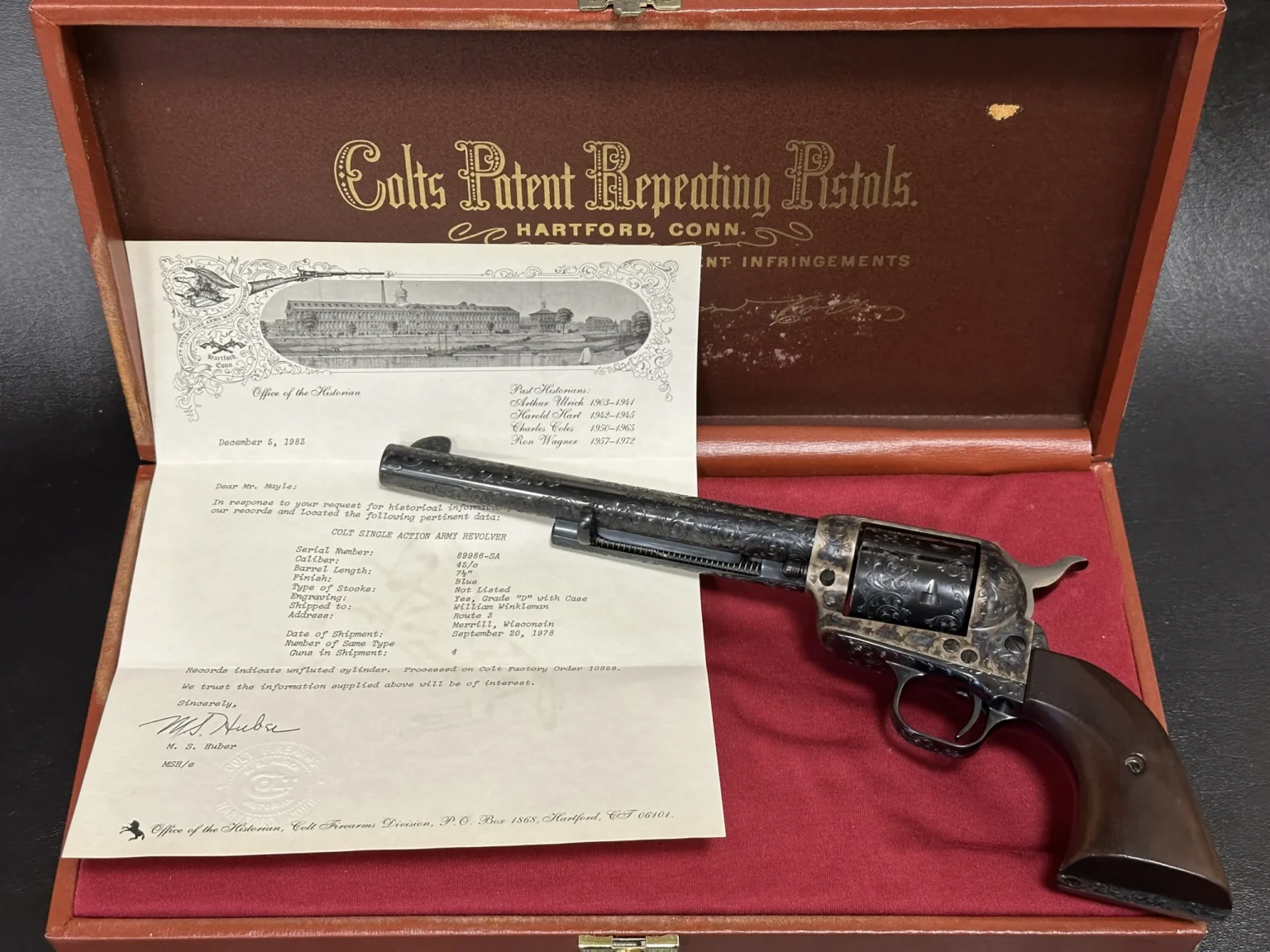
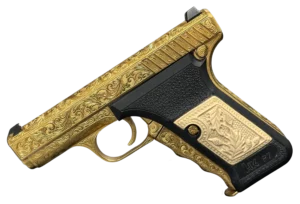
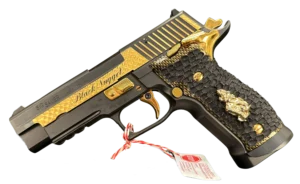
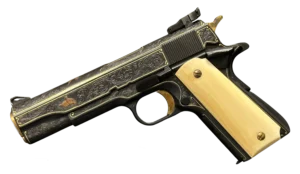
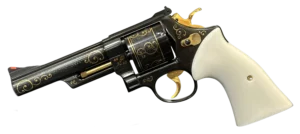
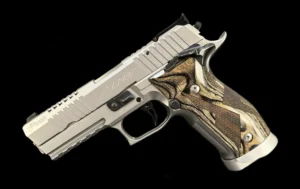
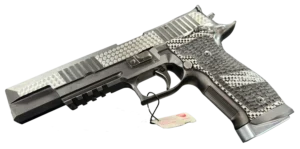
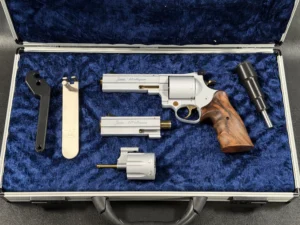
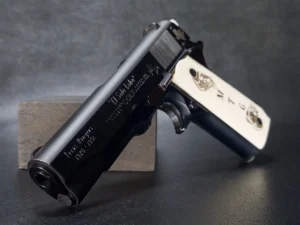
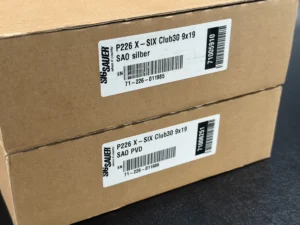

3 Responses
screw retaining cylinder pin did not continue till 1941. i stopped reading right there. crazy wrong
i have a colt saa with the serial number sa37874 is this legit?
you should know the answer by reading the article.